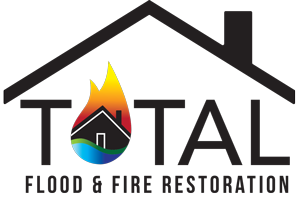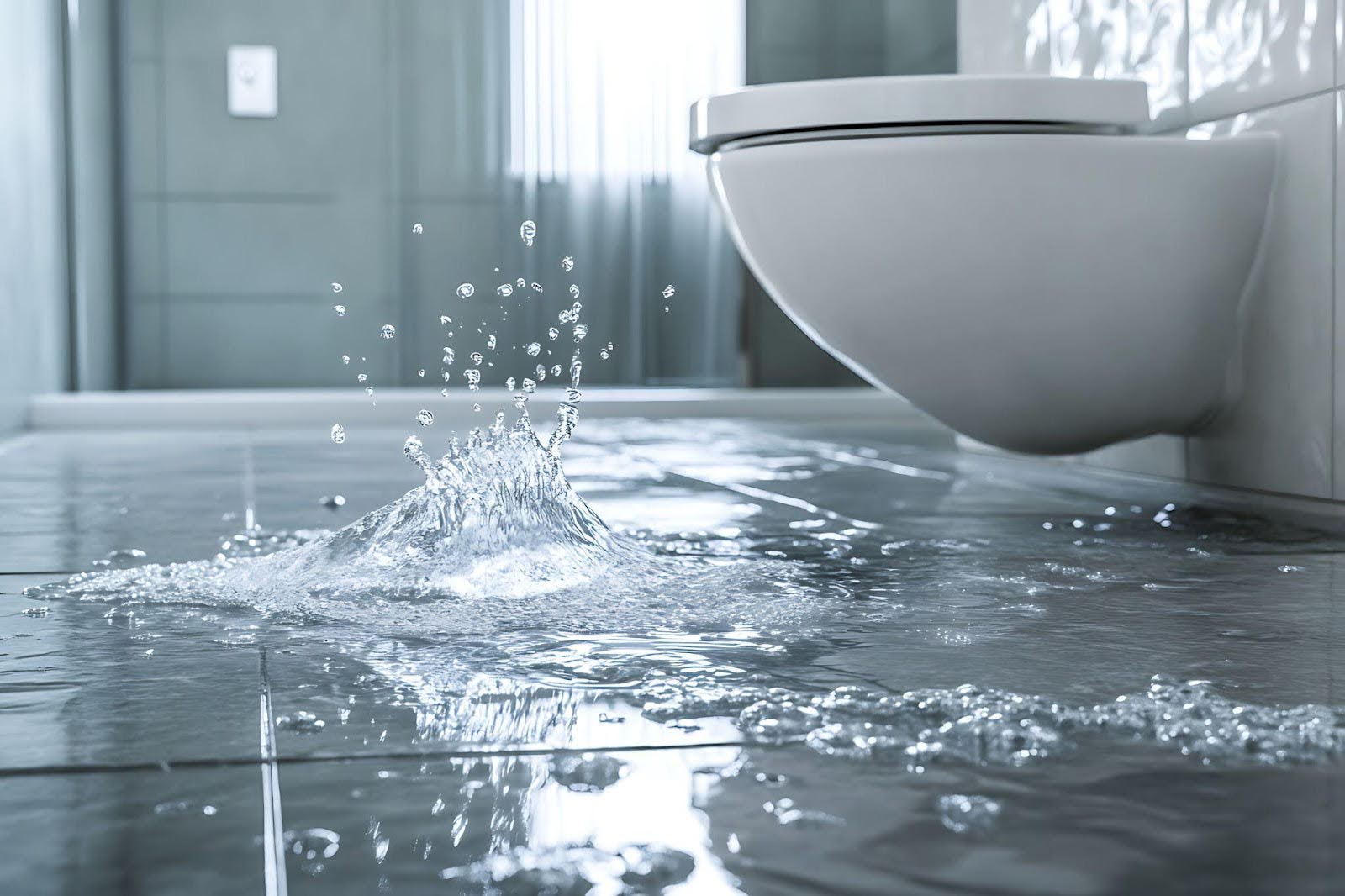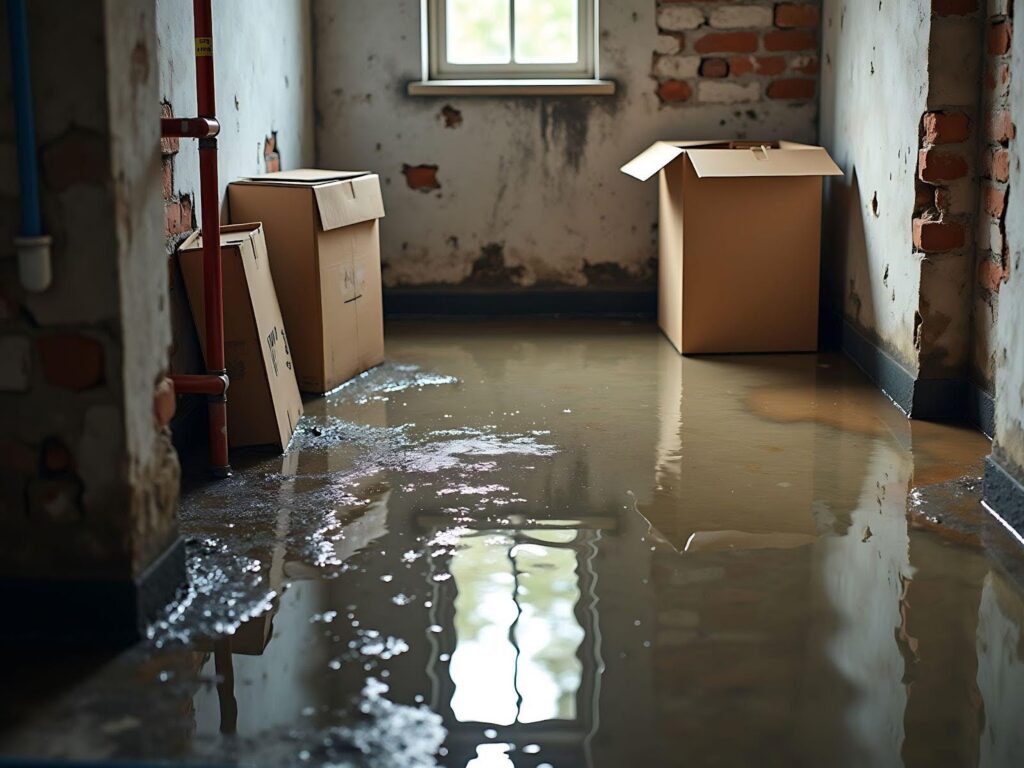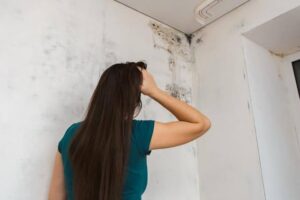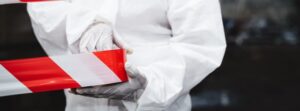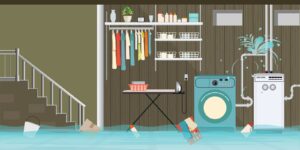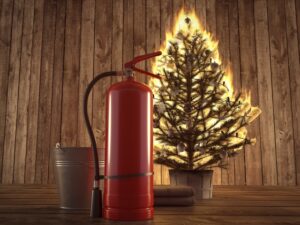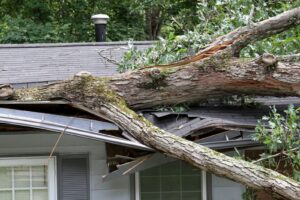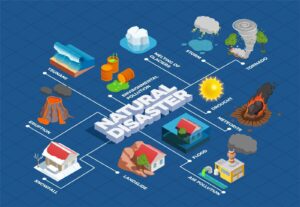Sewage damage reaches far beyond your plumbing system. It threatens your health, weakens your home’s structure, and leads to expensive repairs when ignored.
Raw sewage contains bacteria, viruses, and parasites that create serious health hazards. Exposure to contaminated water increases the risk of illness, infection, and skin problems. At the same time, sewage seeps into floors, walls, and insulation, compromising structural integrity and encouraging mold growth. The longer it sits, the higher the cleanup costs climb.
This blog helps you recognize the signs of sewage damage early so you can respond quickly. Whether you notice strange odors or damp spots, knowing what to look for and how to act protects your home and your family.
What causes sewage damage in homes
Most sewage issues start with a few key culprits that quickly spiral into serious trouble when left unchecked.
Backed-up drains, broken sewer lines, and septic failures
One of the most common causes involves blockages in toilets, sinks, or floor drains. Grease buildup, flushed non-flushables, or tree root intrusion can clog lines and force wastewater back into your home.
Cracked or collapsed sewer pipes also lead to slow drainage or sudden backups. In homes with septic systems, overflows or tank malfunctions create the same messy result indoors.

Stormwater and heavy rain overloading the system
During extreme weather, municipal sewer systems may reach full capacity. When rainwater has nowhere to go, it reverses course and floods residential pipes. In some neighborhoods, stormwater and sewage share the same pipes, making overflows even more likely. Water entering your basement or lower levels often carries dangerous waste and debris.
Aging or poorly maintained plumbing systems
Pipes wear out over time. Corrosion, sagging lines, and weakened seals allow wastewater to escape or back up. If your home has older plumbing and hasn’t had a recent inspection, you’re more vulnerable to hidden leaks or full-blown sewage damage. Even minor cracks can let contaminated water leak beneath flooring or into drywall.
Key warning signs of sewage damage
Catching sewage problems early protects your home and health. These red flags often point to serious issues lurking below the surface.
Foul, persistent odors
Raw sewage produces a strong, unpleasant smell that often resembles rotten eggs or sulfur. You’ll usually notice it first around drains, basements, or lower-level bathrooms. If the odor lingers even after cleaning, it often signals a deeper issue in your sewer line.
Gurgling drains and toilets
When drains or toilets make bubbling or gurgling sounds, air may be trapped in the pipes due to a blockage or backup. These noises suggest that wastewater struggles to move through the system, and pressure is building inside.
Slow drainage or standing water
Water that drains slowly from sinks, tubs, or showers might indicate a growing clog. If you notice standing water or repeated backups, your pipes may already be compromised by waste or tree roots.
Water stains or discoloration
Brown, gray, or yellow stains on walls, ceilings, or floors often mean contaminated water has seeped in. These marks usually appear near plumbing fixtures or along baseboards and signal a leak behind the surface.
Mold or mildew growth
Excess moisture from sewage creates an ideal environment for mold. If you spot patches of black, green, or white mold — or smell a musty odor — you may be dealing with hidden water from a sewage issue.
Wet or warped flooring
Flooring that feels soft underfoot, buckles, or lifts at the edges likely absorbed water. Sewage beneath the surface soaks the subflooring and causes long-term damage if ignored.
Rodent or insect activity
Increased pests like rats, cockroaches, and flies often indicate unsanitary conditions. These creatures thrive in damp, contaminated areas and often follow the trail of sewage inside.
If you notice any combination of these symptoms, immediately contact a certified cleanup professional to assess the situation.
Health and structural risks of untreated sewage damage
When sewage seeps into your home, it brings more than a foul smell and mess. The longer the problem remains unaddressed, the greater the threat to your health, property, and air quality.
Exposure to harmful pathogens
Sewage often contains dangerous microorganisms, including E. coli, Salmonella, and hepatitis viruses. Contact with contaminated water or surfaces increases the risk of infections, skin rashes, and respiratory issues.
Even a small amount of exposure may cause serious illness, especially in children, seniors, or individuals with weakened immune systems.
Damage to building materials
Sewage moisture quickly saturates porous surfaces. Wood framing begins to rot, insulation loses effectiveness, and drywall crumbles or warps. Over time, these weakened materials compromise the structural integrity of your home, leading to costly repairs or replacements.
Lasting effects on air quality
Even after visible signs disappear, sewage residue leaves behind lingering bacteria and moisture that promote mold growth. Spores circulate through HVAC systems and ductwork, lowering indoor air quality and triggering allergic reactions or chronic breathing problems.
Untreated sewage damage does more than create an unpleasant environment—it poses real risks to your home and the people living in it. Acting fast prevents these dangers from spreading and protects the health and safety of everyone inside.
What to do if you suspect sewage damage
When signs of sewage damage appear, quick action protects your health and limits the destruction. Taking immediate steps reduces contamination and speeds up the restoration process.
Turn off the water supply
If you notice backups, leaks, or flooding, stop the water flow at the main shutoff valve. Preventing additional water from entering the system helps contain the damage and reduces the risk of overflow. Do not flush toilets or run water through sinks or appliances until the issue is addressed.
Avoid contact with contaminated areas
Stay out of any rooms that show signs of sewage backup. Contaminated water carries harmful bacteria and viruses that spread through touch or inhalation. Do not attempt to clean up the mess yourself. Keep children, pets, and vulnerable individuals away from the affected space to avoid accidental exposure.
Ventilate the space
Open windows and doors to let in fresh air and reduce the buildup of toxic fumes. Proper ventilation lowers humidity and minimizes the risk of mold growth. If you use fans, place them near open windows to direct contaminated air outdoors rather than circulating it throughout your home.
Call a certified sewage cleanup specialist
Professional cleanup crews have the training, equipment, and protective gear to handle sewage safely. They follow strict health protocols to remove waste, sanitize surfaces, and restore damaged materials. Prompt cleanup prevents long-term structural issues and restores the safety of your home.
Trust Total Flood and Fire Restoration for expert sewage cleanup
When the situation demands expert help, count on Total Flood and Fire Restoration.
Our certified team responds fast, follows strict safety protocols, and uses advanced equipment to remove contaminants, sanitize your space, and fully restore your home. Whether you’re dealing with a minor backup or widespread sewage damage, we bring the professionalism, care, and thoroughness you need during a stressful time.
Contact Total Flood and Fire Restoration to protect your home and confidently restore safety.
